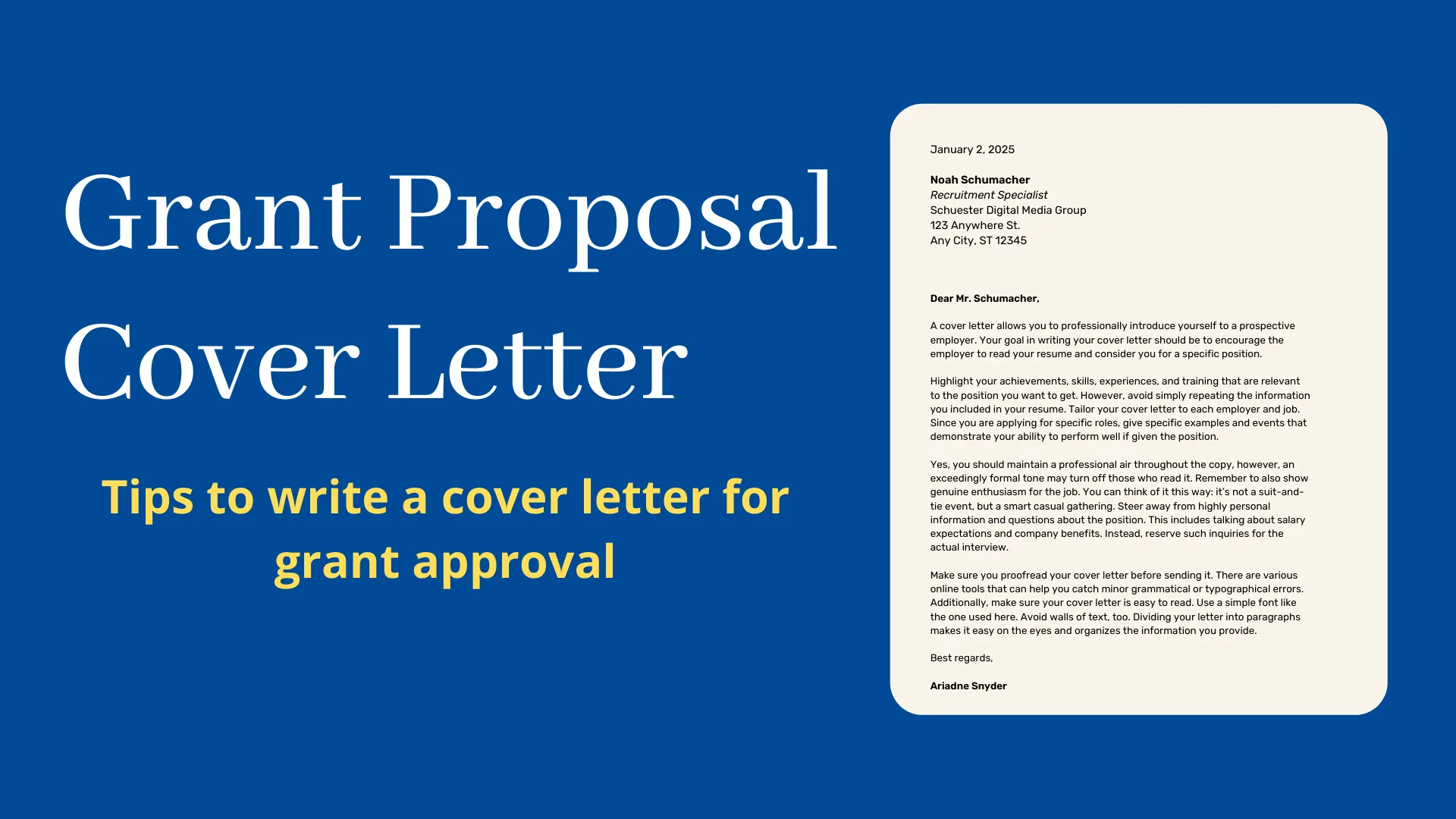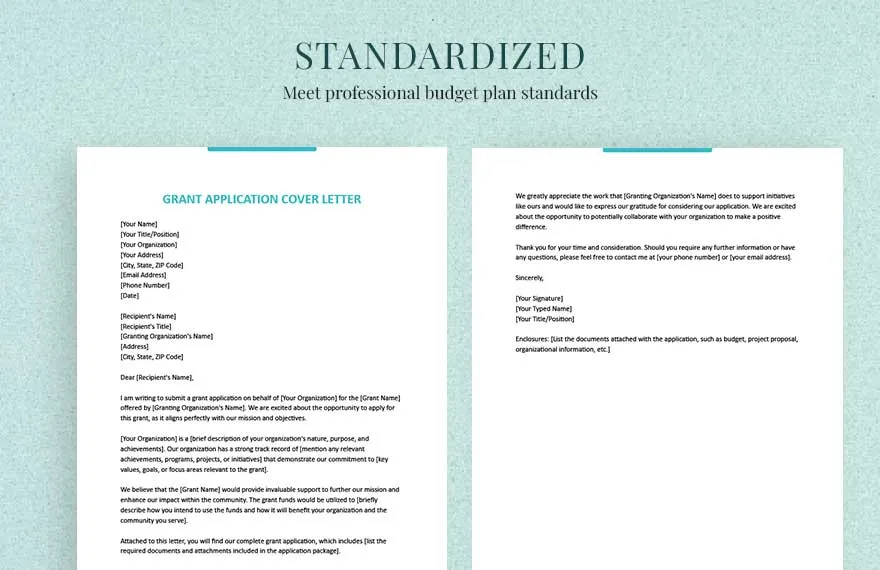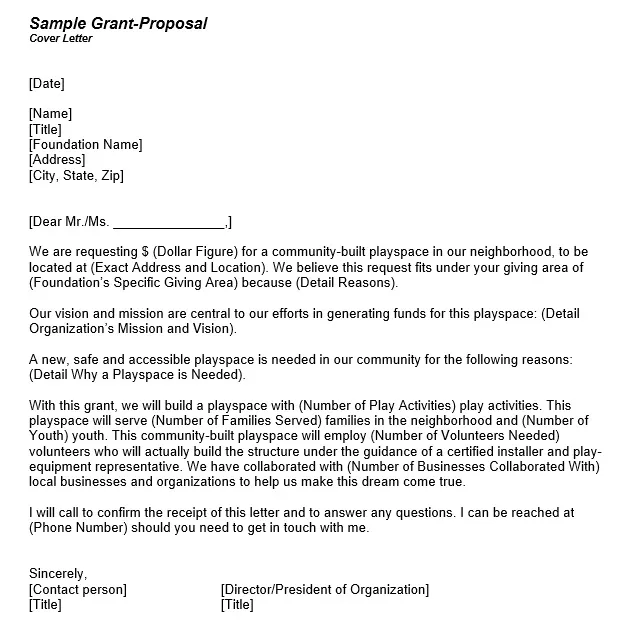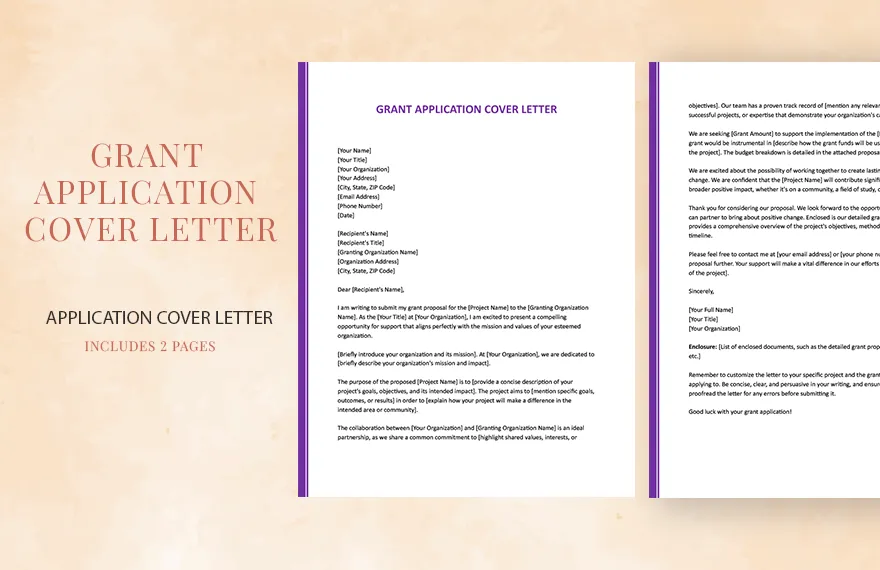What is a Grant Application Cover Letter?
A grant application cover letter is a crucial document that accompanies your grant proposal. It serves as your introduction to the funding organization, providing a concise overview of your project and organization. Think of it as your first and often only chance to make a strong impression. A well-crafted cover letter can significantly increase your chances of securing funding by effectively communicating your project’s significance, your organization’s capabilities, and your commitment to the grant’s objectives. It’s not just a formality; it’s a strategic tool designed to capture the reader’s attention and persuade them to delve deeper into your proposal. Therefore, it’s vital to treat this document with the importance it deserves. Remember, this is the initial step in the process.
The Purpose of a Cover Letter
The primary purpose of a grant application cover letter is to introduce your proposal and summarize its key elements. It highlights the critical aspects of your project, such as the problem you’re addressing, your proposed solution, and the expected outcomes. A well-written cover letter clarifies why your project is worthy of funding and how it aligns with the funder’s mission and priorities. It shows that you understand the funder’s goals and that your project is a good fit. Furthermore, it allows you to build a relationship with the funding organization. The cover letter establishes credibility and shows that your organization is professional and capable. It gives you an opportunity to present yourself in a way that helps the reader understand the scope and importance of your proposal. It also offers a space to thank the funder for their time and consideration.
Key Components of a Grant Application Cover Letter

A strong cover letter typically includes several essential components that collectively present a compelling case for funding. You should include the date and the funder’s contact information. Always start with a professional salutation. Begin by briefly introducing your organization and the project for which you are seeking funding. It should be clear and concise. The letter should explain the nature of the need or problem your project addresses and why this need is important. Then, it must give a summary of the proposed solution or the project itself. State the expected results or impact of the project in measurable terms. Finally, it should include a call to action, politely requesting the funding and expressing your gratitude for their consideration. Keep it straightforward and use language that is easily understood. This way, it will be easy for the reader to comprehend the information.
Applicant Information and Contact Details
Start your cover letter by providing your organization’s full name and address at the top. Follow this with the date of the letter and the complete address of the funding organization. Ensure all contact information is accurate. Include the name of the specific contact person at the funding organization, if known. If you do not know the specific contact, you can use a general salutation like “Dear Grant Committee.” It is always more personable to address the letter to a specific individual, but do not guess. This shows professionalism and attention to detail, qualities that are crucial in grant applications. Double-check all information to avoid any errors that could reflect poorly on your organization. This section sets the stage for the rest of your letter and ensures that the funder knows who you are and how to reach you. This ensures they can contact you if they have any questions about the proposal.
Project Summary: Briefly Describe Your Project
The project summary is your chance to provide a snapshot of your entire proposal. It should be concise, typically no more than a few paragraphs. Begin by stating the project’s purpose or objective. Then, briefly explain the problem your project aims to solve and the target population it serves. Outline your proposed solution or the key activities of your project. Be specific but avoid getting bogged down in excessive detail. Highlight the expected outcomes or benefits of your project and how they align with the funder’s priorities. Focus on the “what,” “why,” and “how” of your project. Use clear, straightforward language. Avoid jargon or technical terms that might confuse the reader. This summary is often the first section of the proposal that reviewers read, so it’s crucial to make a strong, clear, and compelling case that captures their attention immediately. Also, keep it short and to the point, giving them enough information to want to learn more.
Highlighting Your Organization’s Mission and Goals

Clearly articulate your organization’s mission and goals, and how your project aligns with them. Explain your organization’s mission in a way that it resonates with the funder’s values. Showcase the relevant work your organization has done, demonstrating your organization’s experience. Emphasize the connections between your mission, the project’s objectives, and the funder’s priorities. By doing this, you show a sense of shared values. Show how this project is a natural extension of your organization’s work. This helps the funder understand the importance of your project and why your organization is uniquely qualified to carry it out. Connect the project’s goals to the funder’s objectives so they see why they should give their money to you. This is crucial for establishing a strong foundation for your proposal and increasing its chances of success. The more the funders can see the connection between their goals and yours, the better your chances are.
Demonstrating Need and Impact
Clearly and concisely describe the need or problem your project addresses. Provide evidence, such as data, statistics, or real-life examples, to support your claims. This substantiates your argument and shows the problem’s significance. Explain how your project will address the identified need and what the intended impact will be. Present the project’s objectives, ensuring they are specific, measurable, achievable, relevant, and time-bound (SMART). Highlight the potential benefits, such as improved outcomes, increased access to services, or positive changes in the community. Emphasize the long-term impact your project will have. Show how the project aligns with the funder’s priorities and mission to increase the likelihood of funding. Provide a realistic view of the situation. The more accurate the data and evidence you provide, the more credible the proposal will be. Demonstrate a clear understanding of the issue.
Showcasing Your Qualifications and Experience
Highlight your organization’s relevant experience and expertise in the field. Describe past projects, accomplishments, or programs that relate to the proposed project. Briefly mention key personnel involved in the project, emphasizing their skills and qualifications. Explain how your organization’s team is well-equipped to successfully implement the project. Demonstrate your organization’s capacity to manage the project effectively. Mention partnerships or collaborations that add value or support to your project. Ensure that all claims are supported by evidence. Presenting your organization’s capabilities gives the funder confidence in your ability to achieve the project’s goals. By showcasing your experience, skills, and past successes, you convince the funding organization of your capability. Show why you are a good choice for the grant.
Budget Overview and Financial Information

Provide a brief overview of the project’s budget, including the total amount requested from the funder. Break down the major expense categories, such as personnel, supplies, and travel. Ensure that the budget aligns with the project activities described in your proposal. Mention any other sources of funding, whether secured or pending. This shows financial transparency and good planning. The goal is to make the budget information understandable to the funder. The budget overview should be accurate and well-organized. The funder must know what the project requires. A well-presented budget gives the funder confidence in your organization’s financial management. Make the case clear and easy to understand. Always maintain a high level of detail to ensure accuracy. It shows them how you plan to use the money.
Compliance and Legal Assurances
Include a statement affirming that your organization complies with all relevant legal and regulatory requirements. This demonstrates your commitment to ethical practices. If required, state that your organization has the necessary licenses, permits, and insurance. Mention if your project complies with the funder’s guidelines, such as those related to data privacy or environmental protection. Assure the funder that your organization will manage the grant funds responsibly and transparently. By including this section, you reassure the funder about your organization’s accountability. It indicates that you are committed to operating within the bounds of the law. It protects both you and the funder. This ensures they will be able to trust you with the money.
Call to Action Requesting Funding
Conclude your cover letter with a clear and direct call to action. This should include a polite request for the funding and the specific amount. Reiterate the significance of your project and its alignment with the funder’s mission. Express your sincere gratitude for the funder’s time and consideration. Offer to provide any additional information or answer any questions they may have. Provide your contact information again. Reiterate your excitement about the project. The call to action is your final opportunity to leave a positive and persuasive impression. It reinforces your request and encourages the funder to take the next step. Make sure the wording is clear, concise, and professional. It is a critical component of a winning cover letter.
Formatting and Presentation Guidelines

Use a professional font such as Times New Roman, Arial, or Calibri. Keep the font size between 11 and 12 points. Maintain consistent formatting throughout the document. Use single spacing and ensure proper margins. Ensure there is clear sectioning and use headings and subheadings. Avoid using excessive colors or graphics. Proofread the document carefully to eliminate errors in grammar and spelling. Keep the letter concise, ideally no more than one to two pages long. If the funder provides specific formatting guidelines, adhere to them strictly. A well-formatted cover letter is easy to read and demonstrates professionalism. Proper formatting shows attention to detail. It adds to the impact of your message. Make sure it looks professional.
Proofreading and Editing Your Cover Letter
Proofread your cover letter meticulously for any errors in grammar, spelling, and punctuation. Read the letter aloud to identify awkward phrasing or unclear sentences. Have a colleague or someone unfamiliar with the project review your letter for clarity and accuracy. Ensure that all the information is consistent with your full grant proposal. Revise and refine the letter based on feedback. Make sure the letter is formatted correctly. Pay close attention to the tone of your letter, ensuring it is professional and persuasive. Proofreading and editing are essential steps to ensure that your cover letter is polished and professional. This increases the chances of making a positive impression on the funder. It demonstrates your commitment to excellence and attention to detail. The more you edit the letter, the better it will become.
